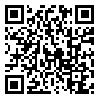Volume 12, Issue 45 (fall 2008)
jwss 2008, 12(45): 167-181 |
Back to browse issues page
Download citation:
BibTeX | RIS | EndNote | Medlars | ProCite | Reference Manager | RefWorks
Send citation to:



BibTeX | RIS | EndNote | Medlars | ProCite | Reference Manager | RefWorks
Send citation to:
Balouchi H R, Modarres Sanavy S A M, Emam Y, BarzeGar M. Effect of Water Deficit, Ultraviolet Radiation and Carbon Dioxide Enrichment on Leaf Qualitative Characters of Durum Wheat ( Triticum turgidum L.). jwss 2008; 12 (45) :167-181
URL: http://jstnar.iut.ac.ir/article-1-910-en.html
URL: http://jstnar.iut.ac.ir/article-1-910-en.html
Abstract: (46853 Views)
Water deficit, ultraviolet radiation and CO2 concentration enhancement are three environmental stresses that affect nutrition of human in future. This research was conducted in the Research Greenhouse of Faculty of Agriculture, Tarbiat Modares University in 2006, in order to study leaf qualitative traits of durum wheat under different levels of carbon dioxide (400 and 900 ppm), ultraviolet radiation (UV A, B and C) and water deficit (up to %60 of field capacity). Ultraviolet radiation enhancement increased anthocyanin, flavenoids and carotenoids of durum wheat leaf. There was no significant interaction effect between carbon dioxide and water deficit on anthocyanin and carbohydrates. Also, the interaction effects among the three factors were not significant on anthocyanin, carotenoids, chlorophyll a and a+b. Water deficit decreased leaf proteins. Increasing intensity of ultraviolet radiation and carbon dioxide enrichment decreased soluble leaf protein in durum wheat under water deficit conditions. The results showed that three main environmental stresses which reduce leaf pigment and plant protection due to negative effects of these stresses along with soluble leaf protein reduction decrease qualitative and quantitative yield of the wheat variety.
| Rights and permissions | |
 |
This work is licensed under a Creative Commons Attribution-NonCommercial 4.0 International License. |





